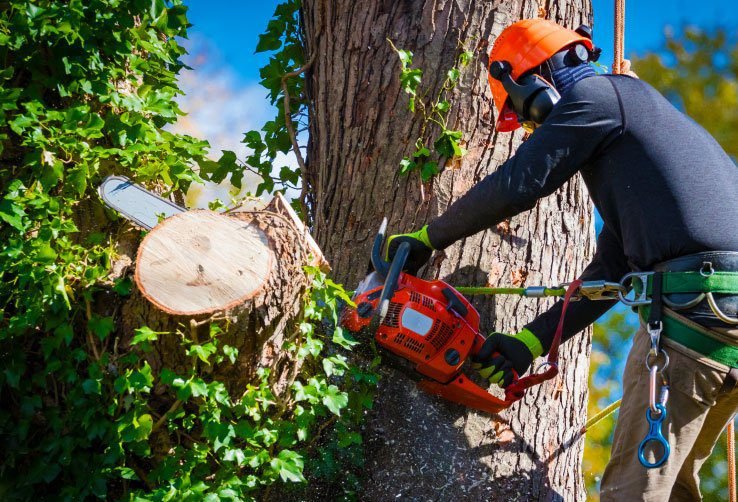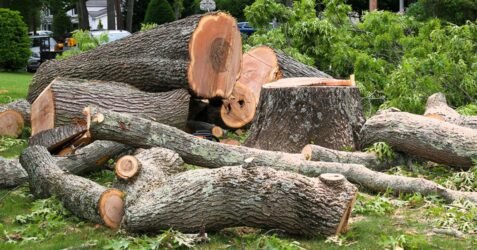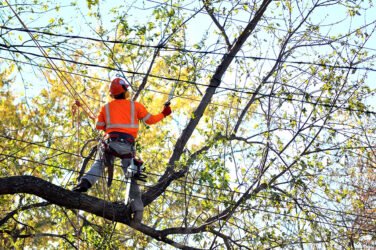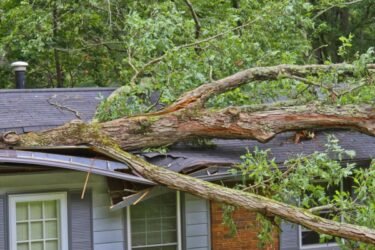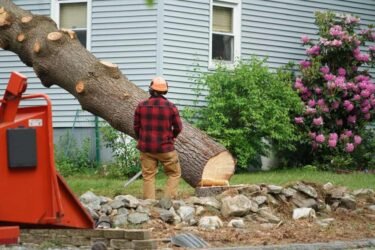Tree removal is often required in most cases to clear space, eliminate risks, or enhance landscaping. But after chopping down one tree, the stump that remains may start growing once more, and this makes your once finished job a constant problem. These persistent suckers are not only unsightly in your yard, but they may also be an indication of a new emergence of a tree that you had assumed was dead.
Persistent sprouting isn’t something that happens to you. This is the same problem experienced by several people in Springfield, MO. Fortunately, there is a way to permanently prevent a tree stump from regrowing: by using the correct strategy. Shall we identify the functional approaches recommended by the professionals at Springfield Tree Services?
Why Do Tree Stumps Sprout?
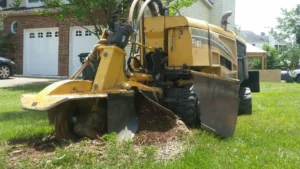
When a tree is cut down, its roots don’t die immediately. The remaining root system continues sending nutrients to the stump. This often leads to new shoots forming around or from the stump. These sprouts try to rebuild what was removed. If left unchecked, they can grow into small trees, causing root spread, yard damage, and potential safety concerns.
Sprouting is especially common in fast-growing species, such as maples, elms, and poplars. It’s also more likely when the stump was left untreated after removal. To stop this cycle, you’ll need to cut off the stump’s nutrient supply or physically eliminate it.
Top 5 Effective Ways to Stop Tree Stump Sprouting!
Stopping stump sprouting requires targeted methods. Here are the top five expert-recommended ways to ensure your tree stumps stay gone.
1. Stump Grinding – The Most Effective Solution
Stump grinding obliterates the stump by breaking it down into wood chips several inches below the soil level. This method is fast, safe, and permanent.
- Why it’s effective: No stump = no sprouting.
- When to consider: Ideal for larger yards or when preparing land for new construction.
- Who to call: Reach out to a professional offering stump removal in Springfield, MO, for fast and clean service.
2. Applying Chemical Stump Killers
Using a commercial stump killer can accelerate decay and prevent regrowth. These chemicals typically contain glyphosate or triclopyr.
- How it works: Drill holes into the stump, then apply the solution.
- Important: Always follow safety instructions and keep pets away from the area during treatment.
- Pro tip: Apply immediately after cutting the tree for best results.
Want fast and safe results? Let Springfield tree removal services handle chemical applications professionally.
3. Natural Decomposition with Epsom Salt
For an eco-friendly option, use Epsom salt or rock salt. It draws moisture out of the stump, speeding up decay and halting growth.
Steps to follow:
- Drill holes into the surface and sides of the stump.
- Fill the holes with Epsom salt.
- Cover the stump with a tarp to prevent rainwater from diluting it.
- Repeat every few weeks until the stump rots.
This is a slower but natural method suitable for homeowners who are not in a rush.
4. Covering the Stump to Block Sunlight
No sunlight = no photosynthesis = no sprouting.
Use thick tarps, rubber, or plastic sheeting to completely block light from reaching the stump.
- Add weight: Use bricks or stones to hold the cover down.
- Check regularly: Trim off any sprouts that manage to grow through the edges.
This method works best when combined with salt or stump killer.
5. Regular Sprout Pruning
If you’re not ready for complete removal, cutting back new sprouts regularly can weaken the stump over time.
- Frequency: Trim sprouts every 2–3 weeks.
- Tools needed: Pruners or shears with disinfected blades.
- Time investment: This is a long-term approach that often requires months or years to implement.
For quicker results, pair this method with tree removal services in Springfield that specialize in root decay and stump solutions.
Common Mistakes to Avoid
Avoiding these errors can save time and prevent regrowth:
- Ignoring new sprouts: The longer you wait, the stronger the stump becomes.
- Overwatering the area: Moist soil helps roots survive longer.
- Using weak chemicals: Always opt for professional-grade products or services.
- Trying to burn the stump: Dangerous, and often illegal in residential areas of Springfield.
Should You ‘Do It Yourself’ or Hire a Pro?
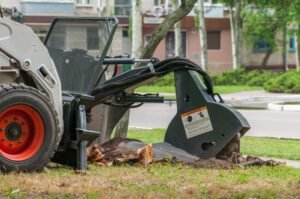
DIY methods may work, but often take months or even years. Plus, using chemicals without experience can harm your soil or nearby plants. For a guaranteed, fast, and hassle-free outcome, trust a certified professional offering Springfield tree services.
At T & F Tree Service, we provide:
- Safe and thorough stump removal in Springfield, MO
- Environment-friendly solutions
- Skilled crew and advanced equipment
- Affordable and fast scheduling
Need urgent help? Our emergency tree services in Springfield are available when sudden tree or stump issues pose a risk to your home.
Conclusion!
Tree stumps don’t have to be a lingering problem in your yard. Whether you choose grinding, chemical treatment, or a natural route, the key is consistent action. Stopping stump sprouting keeps your landscape clean, safe, and pest-free. Not sure which method is best? Let T & F Tree Service take care of the stump so you can enjoy a clean slate. For fast, reliable tree removal services in Springfield, reach out today!

